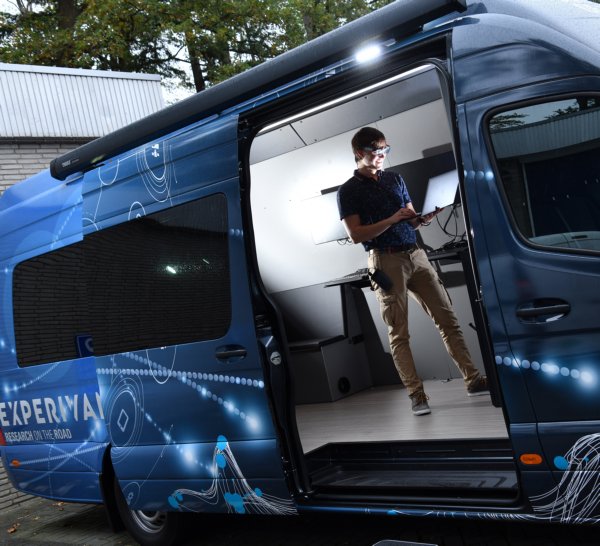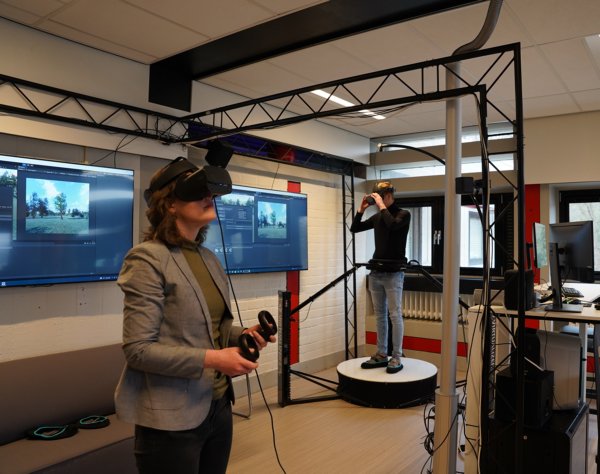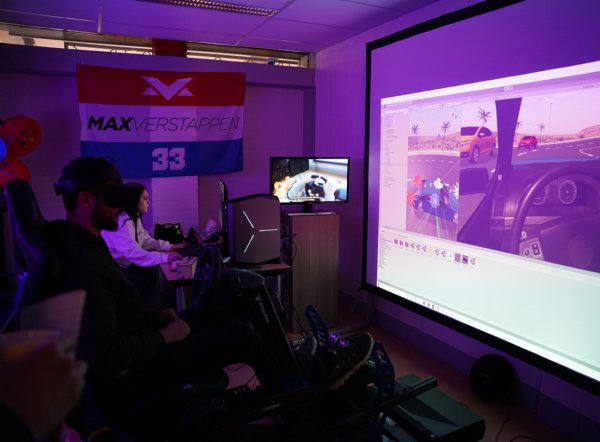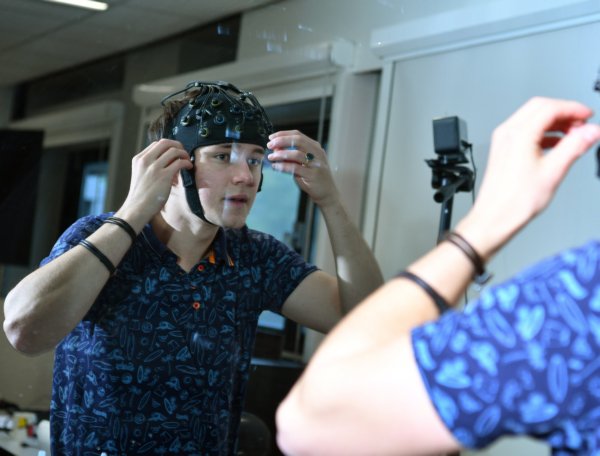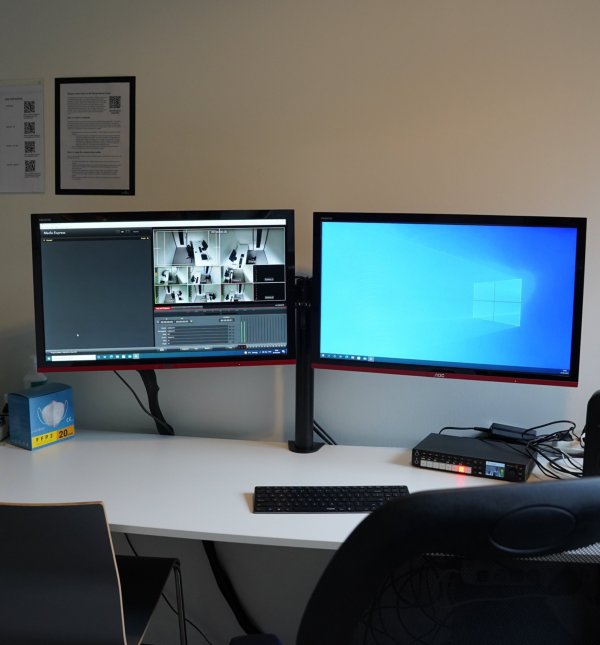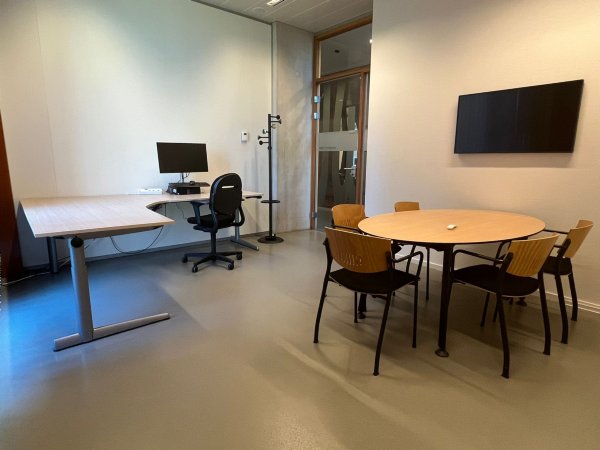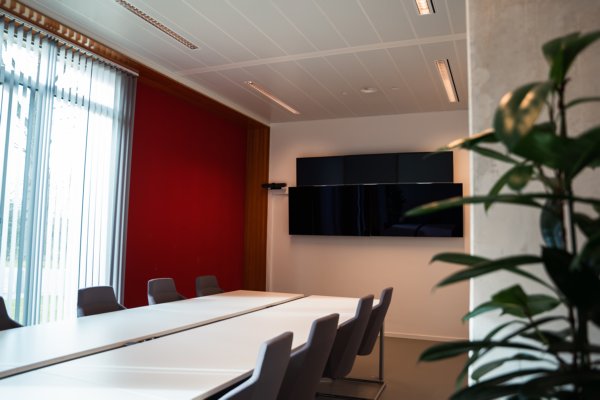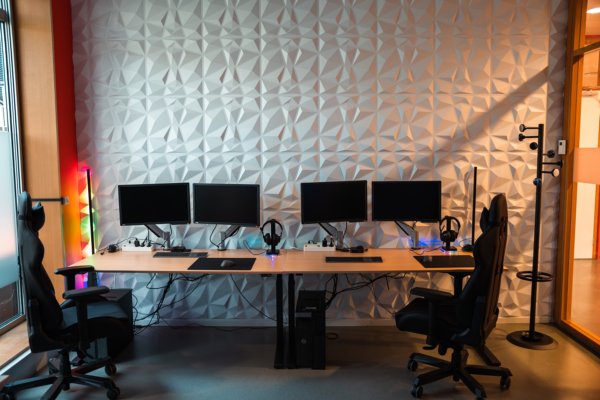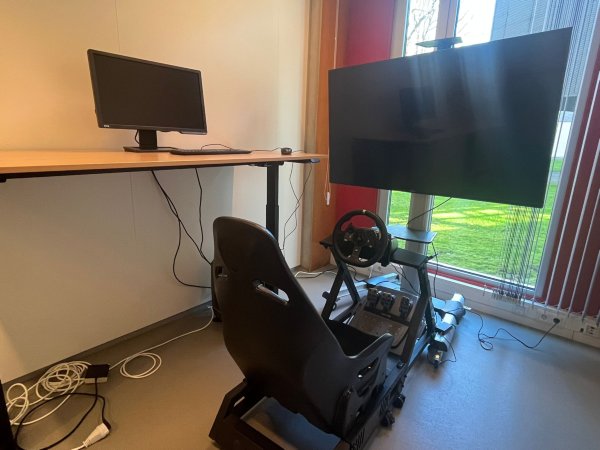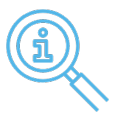Discover our cutting-edge research facilities. the BMS lab has 10 research facilities, specially designed to support a range of experiments and studies.
The BMS Lab has facilities on the second floor of Cubicus and on the first floor of Ravelijn. The facilities In Cubicus comprise of two rooms dedicated to mixed reality (virtual and augmented reality), a room dedicated to cognition and EEG research, seven flexible small cubicles for usability studies and a driving simulator. The rooms in Ravelijn are set up for more practical training sessions such as conducting or role-playing negotiations and different other settings. Next to this, we also have a room where you can conduct studies involving the use of serious games or make use of our portable driving simulator. Moreover, the Experivan allows researchers to take research on the road and reach the target population for their research. Learn more about our specialised lab spaces below.
Please note that the keys can be picked up on weekdays between
09:00 and 12:00, and
13:00 and 17:00. To return a key, you can use the
key dropbox in front of our office (Cubicus B204).
Or, if you have not registered your project yet, do this first and follow these steps to learn how to reserve our facilities.
Our facilities
The Experivan
The Experivan is a mobile lab that enables researchers to take their research on the road and go directly to their target population to conduct their experiments. The Experivan is set up to offer a wide variety of research possibilities. It is equipped with a 4G hotspot, two wall-mounted working stations, a laptop, a TV screen, and audio and video systems. With seating and table arrangements. Researchers can bring their own equipment to use in the van or make use of the BMS Lab equipment.
The XR Lab (CU B205)
This XR Lab is specially set up for the development of Virtual Reality environments and to carry out VR and Motion Capture experiments. This room is suitable for experiments that require both minimal and larger walking space as it has both a wide open area and a VR walking set-up where you can test your development and conduct research with your participants. This lab space is further set up with workstations dedicated to data processing purposes.
The Driving Simulator
The driving simulator enables researchers to conduct studies, experiments and training involving vehicle simulations. It effectively replicates the experience of driving. In this room, researchers can conduct their studies with the driving simulator with the help of a beamer or for more immersive experiences with VR headsets or VR headsets with eye-tracking capabilities.
The Neuroscience Lab
The Neuroscience lab is set up and dedicated to EEG/fNIRS research. The room is equipped with operational equipment dedicated to EEG and fNIRS research, as well as gel and tap. Multiple AV possibilities exist, including an immersive 5m-wide double 4K seamless beamer setup. Moreover, the room is equipped with a one-way mirror and an observation room to allow for group dynamics and group interaction studies.
Flexperiment Lab Spaces
The Flexperiment facility is a set up of seven small cubicle lab spaces with workstations. All the rooms are connected to a remote-controlled camera system that allows for remote monitoring of participants. Four of the rooms are set up for specialised areas, e.g. usability studies, VR, eye-tracking or scent. The remainder of the rooms are flexible to be adjusted based on the researchers' needs.
Flexperiment opens the possibility for a variety of research. Researchers use the specialised room for smaller-scale experiments with one participant at a time.
Negotiations / XR Lab Ravelijn (RA1349)
This office-setting room for 5 people is used for XR (i.e. Virtual, Augmented or Mixed Reality) experiments. This space is better suited for experiments that require minimal walking space. In addition, the space can be used for negotiations studies for up to 5 participants.
Situation Room (RA1444)
This advanced meeting room with high-end visualisation capacities holds place for up to 14 people. There are various TV screens and a high-end PC for rendering and data visualisations. It is also possible to present from a laptop.
Serious Gaming Room (RA1343)
This room is equipped with state-of-the-art (serious) gaming equipment and 3 workstations and enables different light sceneries. It is adjacent to the break-out room and can be enlarged by collapsing the foldable wall between the two rooms.
Break-out Room (RA1347)
This small room can be used for breakouts, and gaming experiments, or be joined into the Serious Gaming Room by collapsing the foldable wall between the rooms. This room is also set up with a smaller driving simulator.
Learn more

